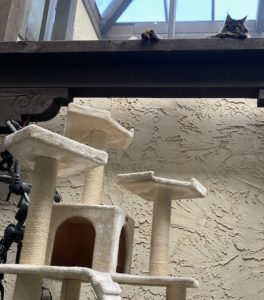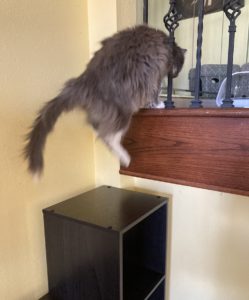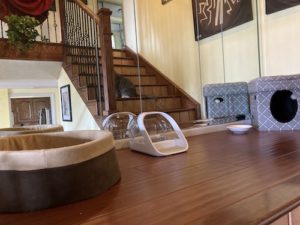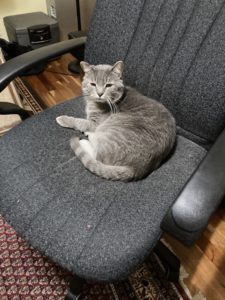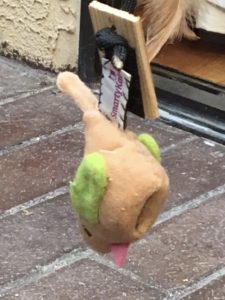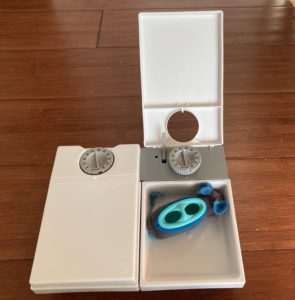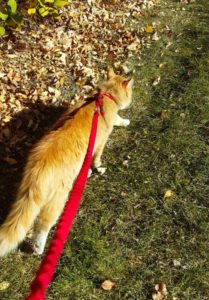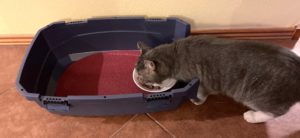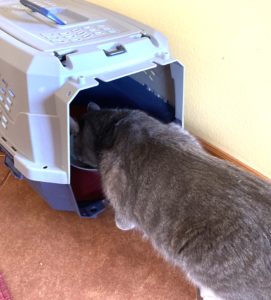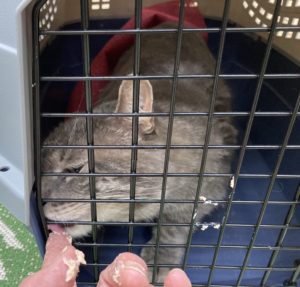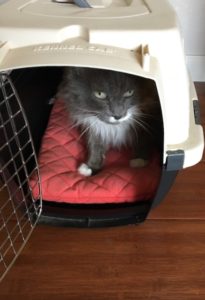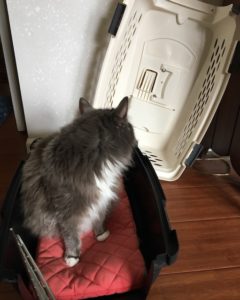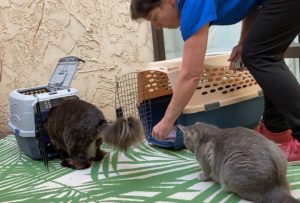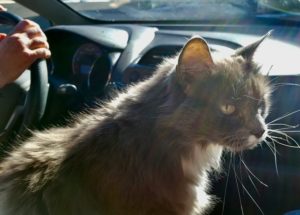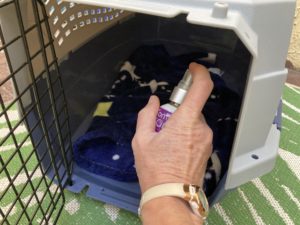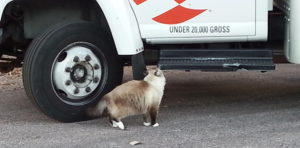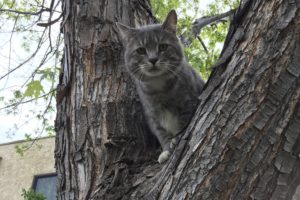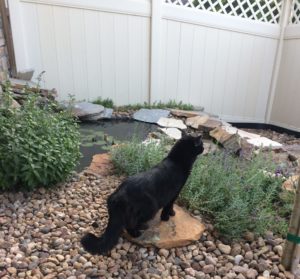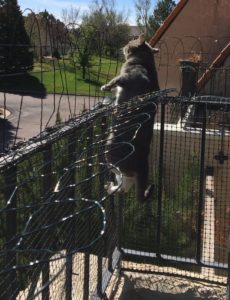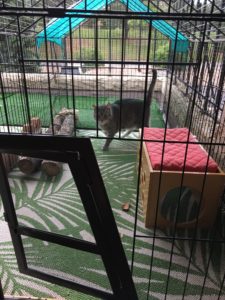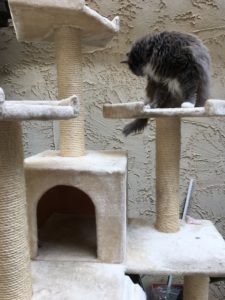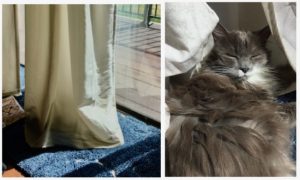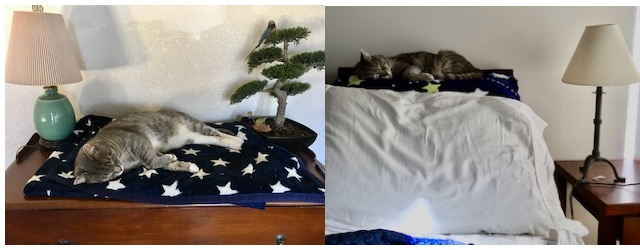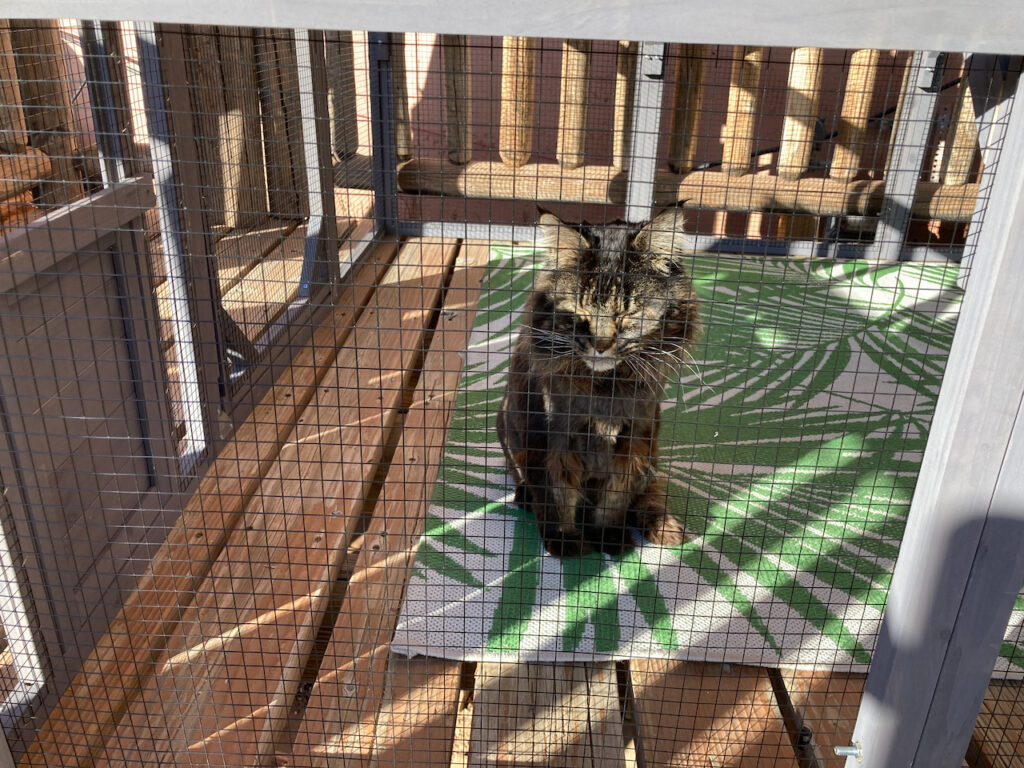 In the U.S., it has become common to keep cats solely indoors. Indoor cats live longer – they are not run over by cars, hunted by coyotes, or injured in cat fights.
In the U.S., it has become common to keep cats solely indoors. Indoor cats live longer – they are not run over by cars, hunted by coyotes, or injured in cat fights.
However, there is a cost to this safety and security. Indoor cats have fewer opportunities to exercise and don’t receive the mental stimulation from hunting and exploring the outdoors.
Both cats and zoo animals are captives in the environments we provide for them. Like zoo animals, cats need enrichment to maintain their health and welfare. A safe place outdoors can provide cats with enrichment from the scents, sounds and views of the outside world.
a catio is a safe place outdoors for cats
I lived in a townhome for 13 years. The common grounds in the complex were spacious and like a park. I was able to walk my cats daily; I also built a small cat enclosure (footprint was 3′ by 6′) that the cats could access by a pet door in the sliding patio door.
I moved about a year ago to a larger, two story house and had plans for a grander cat enclosure. A catio is a safe place outdoors for cats that is large enough for some humans to hang out in. There is a deck on the back of my house which was not being used very much and seemed to be a purrfect place for a catio for me and the cats to hang out.
Due to finances and the desire to get an enclosure up quickly, I chose a pre-fabricated cat house. The Aivutuvin-AIR52 is a frame structure made up of galvanized mesh panels. The footprint is about 6′ by 10′. It has a peaked roof (height about 6′) and has a door for human access in the front.
I had assembled the smaller cat enclosure at my townhome myself. This time, the size of the project was intimidating, so I hired a professional handyman to help with the installation. This proved to be a good idea as assembling the panels that make up the sides, back and front were a 2-person job.
The catio opened for use yesterday. Here are some snapshots of the construction process.

The location: south-facing porch. A “sail” has been put up to offer some shade.
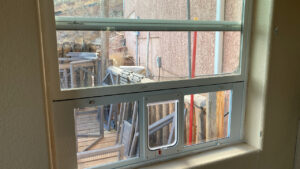
An insert with a pet door is put in the window adjacent to the catio.
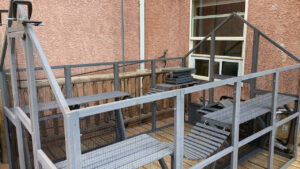
Construction phase: note the shelves for the cats to sit on and the swinging bridges.
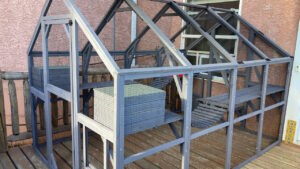
Construction is complete. A tarp will go over the rear half of the catio to provide more shade.
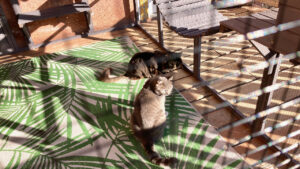
The catio is open for business. The cats have successfully negotiated entering the enclosure using the pet door in the window insert.
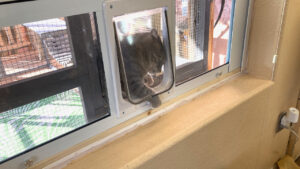
Time for a break and a snack. Gus comes inside using the pet door in the window.
A catio is a safe place outdoors for cats. I will still leash walk my cats daily, weather permitting, but the catio will allow them to choose to go outside when they want to. It is large enough for some deck furniture and I am looking forward to spending time outside on the porch with my cats.

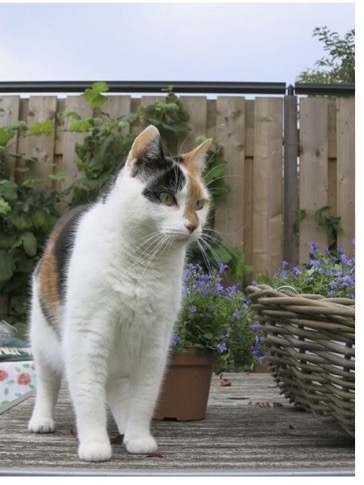
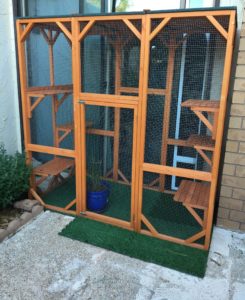
 cat on a morning or afternoon walk in your backyard or neighborhood. After all, getting outdoors is good for us too! It never hurts to have your cat harnessed even in a fenced backyard – this way you can clip the leash on as needed. If you walk your cat in public places, make sure to have kitty in a harness with leash and have a mobile “outdoor safe place” – stroller or backpack – with you.
cat on a morning or afternoon walk in your backyard or neighborhood. After all, getting outdoors is good for us too! It never hurts to have your cat harnessed even in a fenced backyard – this way you can clip the leash on as needed. If you walk your cat in public places, make sure to have kitty in a harness with leash and have a mobile “outdoor safe place” – stroller or backpack – with you.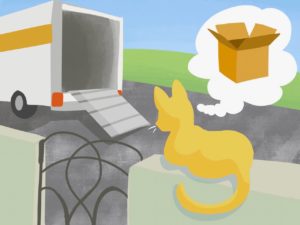
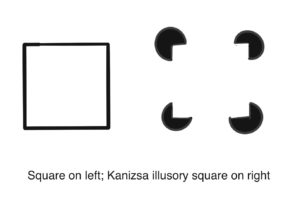 It is not surprising that cats in taped squares became the subject of a research study investigating
It is not surprising that cats in taped squares became the subject of a research study investigating 